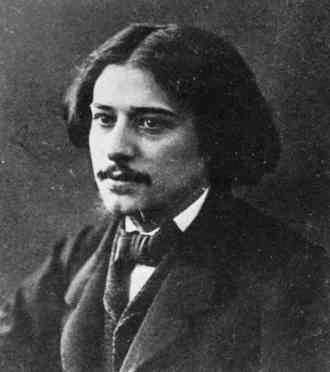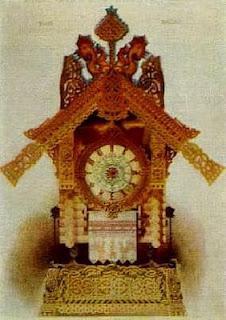
Gautier
After latecomers were admitted came my main event: Berlioz' gorgeous cycle "Les Nuits d'été," six songs set to texts by Théophile Gautier, and tinged with just enough irony to save the lush romanticism from feeling overindulgent. The orchestra, I felt, could have explored more of the subtleties of the piece, but they did create a beautiful tapestry of sound. DiDonato, to my delight, was alert to both the work's intensity of emotion and the shifts--and layers--of its moods. In addition to radiance of tone and liquid phrasing, DiDonato brought to the songs a sensitive restraint which made the rich orchestration and extravagant language seem only the most suitable ways of communicating intimacy. "Villanelle" unfolded from flirtation to ecstasy; "Le specter d'une rose" had its sensuous syllables sensually caressed. The dreamy waltz rhythms of the remembered ball were nicely handled by the orchestra, as well. The dark gravi of "Sur les lagunes" were delivered with unexpected authority. DiDonato made this a (self-)hypnotic narrative of obsessive grief, carried on the dark currents of the orchestra. Brighter color returned to the voice for a poignant "Reviens, reviens..." but by the third repetition of this plea in "Absence," its hope was acknowledged as delusory (and I got teary.) By "Au cimetière," of course, the beloved is only a tremulous ghost, a presence less real than the white dove, the yew tree, and the marble tomb. This haunted mood was shaken off utterly for "L'île inconnue"; DiDonato's body language became freer, and the joyously uninhibited fantasies of fresh love were celebrated in her flirtatiously showy description of a boat freighted with citrus, piloted by angels. The orchestra evokes memories of old loves; but the breeze is rising and new voyages await.
Viktor Hartmann, "Baba Yaga's Hut"
There was also some Mussorgsky. And in the event, it was a stirring and vivid performance. "Pictures at an Exhibition," in Ravel's orchestration, allowed the orchestra to show off their strengths. Strong characterization and rich coloring made the series of vignettes an enjoyably immersive experience. The mischief of "The Gnome," balanced between humor and menace, got things off to a strong start, and the orchestra sustained this dramatic momentum, with the seductively eerie "Old Castle" and the impossible-not-to-giggle-with-your-seat-neighbor "Ballet of the Unhatched Chicks" as highlights. I don't remember when I first read Russian fairy tales (or had them read to me,) but I always, always find "Baba Yaga's Hut" nightmarishly creepy. It's on chicken legs. And it belongs to a witch. Nothing good can come of this. "The Great Gate of Kiev" avoided bombast (insofar as possible) emphasizing instead the recurrence of the promenade theme, the integration of the viewer/listener with the encountered art. The audience reacted with delirious enthusiasm.
